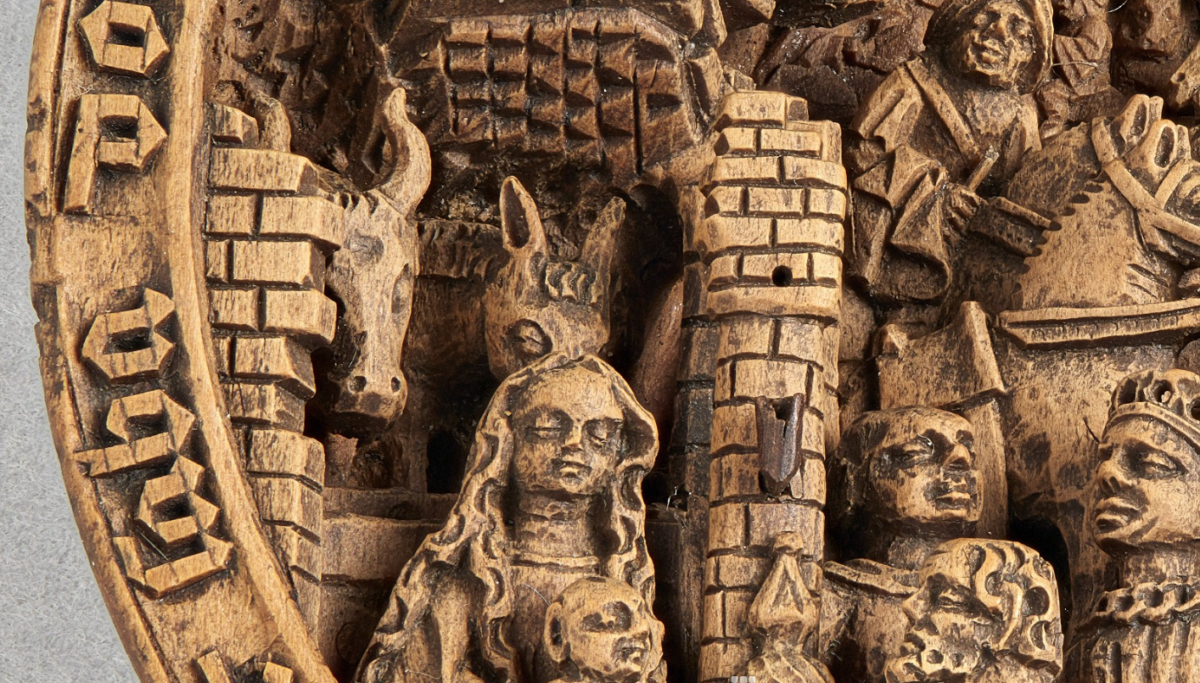It is an extraordinary exhibit! It’s still on for another few weeks. If you go, take a magnifying glass (or use your phone camera’s zoom feature) to see the details. These carvings are TINY! Most of them are in the neighborhood of 2 inches in diameter.
As best as anyone knows, these objects are about 500 years old and appear to have been created in the Netherlands. At least that is where most of them have been found, passed from generation to generation in the families of patrons and collectors. Precisely who made them and precisely where, no one knows.
One of the conservators, Peter Dandrige believes that the vast majority of them came from one carver, or from that carver’s workshop. David Esterley isn’t quite convinced of that. He’s seen other instances of many people taking up a popular genre and working with it until the market waned. In either case, it’s thought that the creation of these miniatures was done only for about one generation.
Peter Dandrige and David Esterly gave a talk at the exhibit on Sunday, April 30. Peter is one of the conservators who examined these carvings with all manner of imaging techniques, such as “micro CT.” David Esterly, as many of us know is a renown, current day, carver. Both offered a great amount of speculation about these miniatures. Peter talked of discovering how the carvings are made of layers, as shown in the video. David talked of wood carving techniques, brought along a block of boxwood to show how dense and tight grained it is, and even had a “layer” of his own that he had begun carving in the style of these 500 year old carvings. David said he used his smallest tools and still ended up with a result 30-50% too large.
Much of the speculation, of course, was about the making of these miniatures. Peter believes that the holes found in many layers were more than for assembly, but also for work holding while carving. David suggests otherwise, that mere pins would not have been enough to take the pressure of working. He speculates that the carver(s?) used tabs extending beyond the edge of each scene as pads for clamping.
Since they are so small, the best way to see them in close detail is to use either of two resources:
- The exhibition’s catalogs (there are two) have many very high quality photos, along with a number of essays. My choice among the two is the one published by “AGO Research” the people who did the actual research.
- An online site “The Boxwood Project,” has an extensive collection of high resolution photos and a zoom tool that lets one magnify these carvings to the point of being able to see tool marks.
For carvers, there’s an excellent essay, “The Making of Gothic Boxwood Miniatures” at the Boxwood Project site. That essay offers more photos of the layering technique and a photo of some tools used by yet another artist, 150 years later, to create similar miniature carvings.
Lastly, here is a borrowed screen capture at about 75% zoom from one of the images at The Boxwood Project site. (click for a larger view)

Leave a Reply